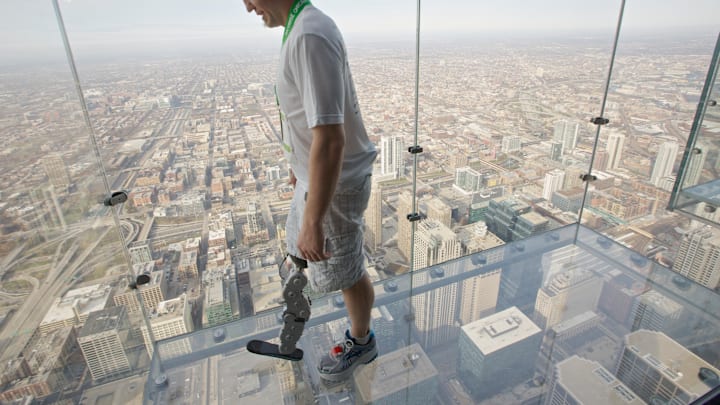Bionic technology has made significant strides in the development of advanced prosthetic limbs, which feel more natural and provide better feedback.
Neuroprosthetic Interface
A key component to better bionics is the development of the neuroprosthetic interface, which surgically connects agonist-antagonist muscle pairs with sensing electrodes. These connections allow the muscles to control the prosthetic limb and provide feedback about its position and movement, which helps users walk more naturally and navigate different types of terrain more easily.
Success in Clinical Trials
Clinical trials have shown promising results for this technology. In one study involving 14 participants with below-the-knee amputations, those who received the neuroprosthetic interface walked 41% faster than those with traditional prosthetics and were better able to travel stairs, slopes, and uneven pathways. Scientists believe the enhanced sensory feedback provided by the neuroprosthetic interface allows the users to control the prosthetic more precisely.
Real-World Applications
Participants with the neuroprosthetic interface exhibited more natural movements, such as pointing their toes upward when climbing stairs or stepping over obstacles. They were also able to coordinate their prosthetic limb movements with their intact limb more effectively, which is a big improvement over traditional prosthetics.
Future Prospects
The success of these trials suggests that neuroprosthetic interfaces could become a standard feature in future prosthetic limbs, and commercial products incorporating the tech could be available within the next five years.
FAQ
Are There Any Risks Associated with Neuroprosthetic Interfaces?
As with any surgical procedure, there are potential risks associated with the implantation of neuroprosthetic interfaces. These risks include infection, complications from surgery, and the body's possible rejection of the implanted electrodes.
What Kind of Maintenance Does a Bionic Limb with a Neuroprosthetic Interface Require?
Maintaining a bionic limb with a neuroprosthetic interface involves regular check-ups with medical professionals to ensure the interface and prosthetic are functioning correctly. Users may also need to perform routine care and maintenance of the prosthetic limb to keep it in optimal condition.
Can Neuroprosthetic Interfaces Be Used for Upper Limb Prosthetics as Well?
Yes, similar principles of connecting muscle pairs with sensing electrodes will work for upper limb prosthetics, and research is still ongoing.
Follow GeekSided to stay updated about advancements and to leave questions and comments.
